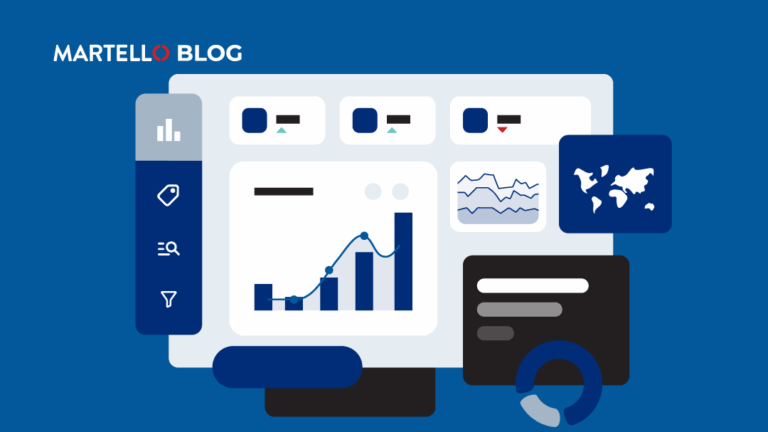Will 2025 Be The Year IT Gets Ahead?
Microsoft Teams Monitoring
Enterprise IT teams ended 2024 under more pressure than ever to ensure peak performance from the communication and collaboration tools their organizations depend on. With hybrid work booming, AI everywhere, and businesses increasingly concerned about rising costs, expectations are only likely to intensify in the year ahead.
Fortunately, IT teams have also never been better equipped to deliver — on their own or with the support of partner MSPs (managed service providers) who can bring value-added expertise in cybersecurity, backup and disaster recovery, helpdesk and support, virtualization, network management and compliance.
With the right strategies and right tools, 2025 could be the year enterprise IT takes control of digital productivity experience for good.
In this blog, we take a look at some of the dominant trends influencing the collaboration and productivity software space as the new year gets underway — and what they mean for IT departments around the world.
1. Organizations will rely on a growing mix of collaboration tools.
Companies and their employees seem intent on mixing and matching collaboration and productivity applications to meet their needs, with Zoom and Microsoft Teams topping the list at a combined 88% market share. Convenience, flexibility, accessibility and other factors seem to inform which apps are used when. Many enterprise users choose one application for external-facing employees, for example, while depending on another for users that primarily collaborate internally.
Microsoft’s recent Zoom integration for Teams is proof of the growing demand for interoperability among platforms, and the recent unbundling of Teams from Microsoft 365 further opens the door to multi-solution mashups.
What does all of this mean for enterprise IT? Even higher expectations to keep productivity and collaboration solutions working as they should.
2. Enterprises will want remote work to cost less.
The trouble is, those solutions don’t always work as they should. Common issues range from microphone and webcam glitches to connectivity and login problems, freeze-ups and crashes. And they can come with a high a price tag.
Martello’s new cost model co-developed with EnableUC shows that a company with 2,500 users, five locations and 40% remote work can spend $540,000 a year on Teams support alone. That jumps to over $1 million for organizations with 10,000 users and 20 locations even with half that volume of remote work.
The lowdown: As enterprises seek to cut costs generally, minimizing tech support with proactive maintenance on business-critical apps is likely to become a growing priority.
3. AI performance will become another demand on IT.
The 2024 Microsoft Work Trend Index published in June found workers want AI to help relieve their burdens and companies are increasingly looking for employees experienced in using AI tools. Last year’s addition of Copilot to Teams is an example of how productivity tools are going to become platforms for meeting both sets of needs, providing ways for workers to gain efficiencies as well as the AI skills employers want. But Copilot is a premium service, meaning organizations are paying for cutting-edge AI capabilities — and need to generate returns.
The upshot: IT will be expected to manage network performance for Copilot AI.
4. Microsoft SaaS outages will continue.
Another finding from our cost model was that proactive monitoring and advanced troubleshooting with Vantage DX measurably speed up issue resolution and reduce IT costs. With Teams, for example, Vantage DX can help cut support tickets by up to 60%. When issues originate on the Microsoft end of the service, IT knows sooner thanks to Vantage DX’s Microsoft Outage Early Warning feature, which sends automated alerts well before Microsoft makes an official announcement — in an October 2024 outage, nearly three hours ahead.
Conclusion: With Vantage DX, IT can check more boxes for the enterprise, users and overall digital experience when it comes to productivity and collaboration tool performance.
5. Enterprises will turn to MSPs for help.
KPMG’s 2023-2024 Global Managed Services Outlook found that nearly three-quarters (73%) of companies already make use of managed services — often to access new technologies and pursue strategic priorities.
When it comes to productivity and collaboration tools, managed service providers (MSPs) can offer a convenient, flexible way to bridge internal gaps in headcount, skills and processes. With Martello in 2025, MSPs will have the opportunity to bring significant value — for example, by simplifying Microsoft Teams/365 licensing, deployment and monitoring, including for premium offerings such as Teams Phone and Teams Rooms.
In it for the long haul
Martello is committed to supporting peak productivity and collaboration performance in 2025 and beyond, building on our record of helping enterprises and MSPs deliver excellent experiences for Microsoft Teams and 365 and the Mitel Business Communication Platform. Find out what that support could mean for your business by digging deeper into our cost study here.



